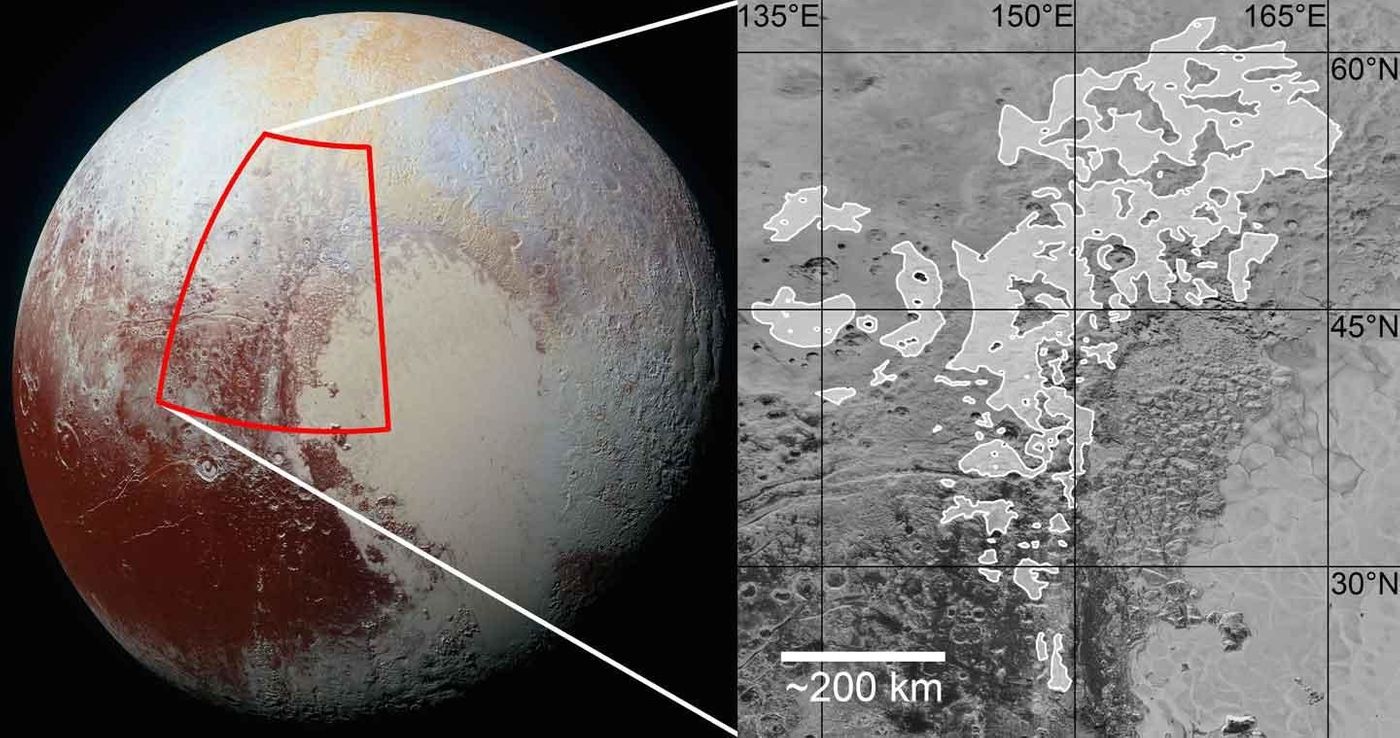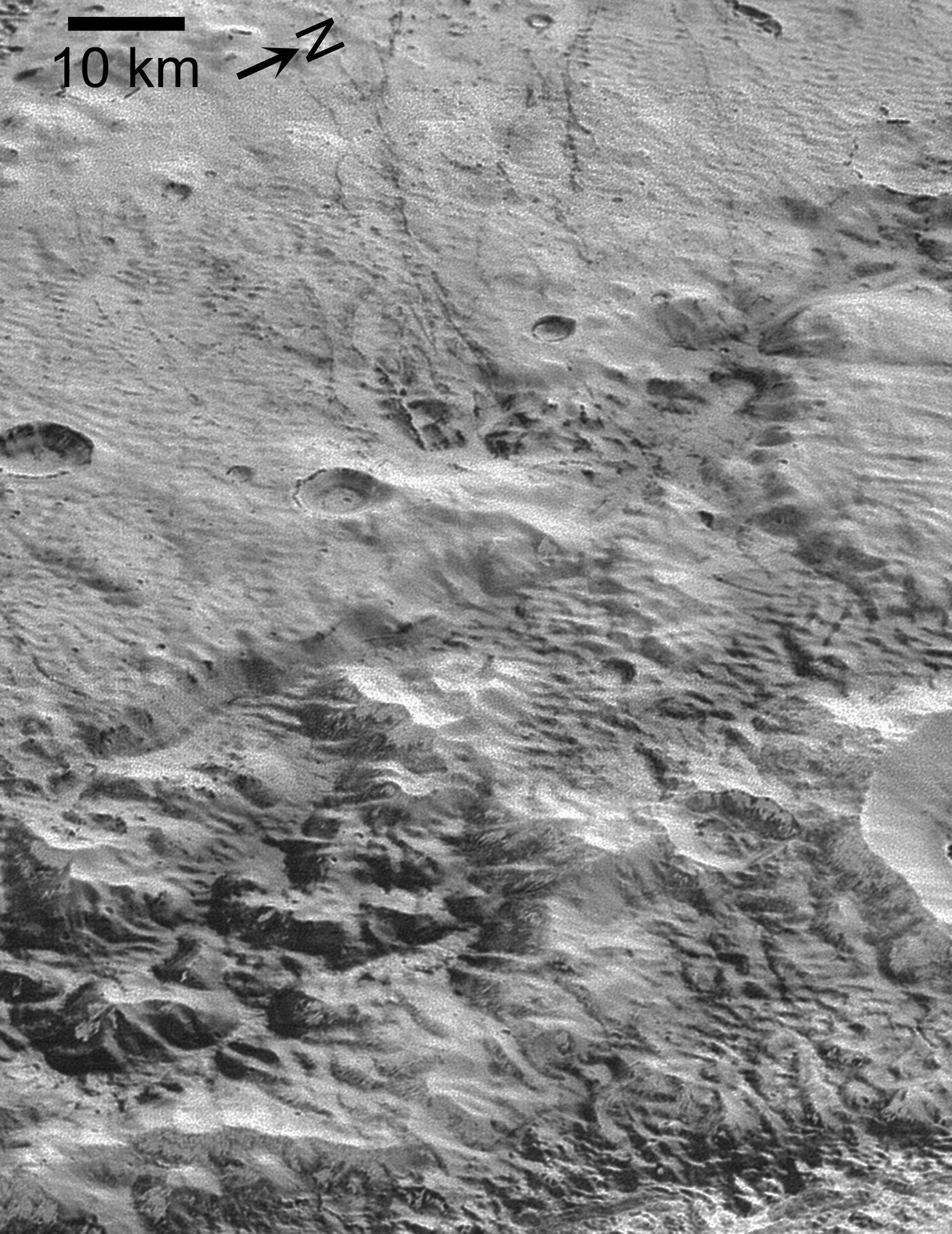Was Pluto Once Home to Ancient Glaciers?
When NASA’s New Horizons probe conducted its historical fly-by of Pluto in 2015, the American space agency received some of the sharpest photographs denoting the dwarf planet’s surface details that had ever been captured by humankind. The pictures were stunning back then, and they continue to stimulate scientific research today.
One of the latest bouts of research, led by SETI Institute scientist Dr. Oliver White, suggests that the plethora of washboard and fluted terrains present on the dwarf planet’s surface could be indicative of ancient glaciation. The findings have been published this week in the journal Nature Astronomy.
Image Credit: SETI Institute, New Horizons, NASA
Much of the evidence supporting this argument appears to the Northwest of Sputnik Planitia, the vast nitrogen ice plain with the appearance that many folks associate with a giant ‘Heart.’ As it would seem, the ridges there sport an astonishingly consistent ENE-WSW orientation that can’t be explained by a terrestrial or planetary process or landform. Instead, something else appears to be at work here.
To learn more, Dr. White and colleagues closely analyzed imaging and topographical data obtained by the New Horizons spacecraft as it flew past the dwarf planet. What they found was that the low elevation encompassing the region made it an ideal place for nitrogen-centric ice glaciers to exist in the past.
Furthermore, the various ridges found throughout this region are believed to be remnants of water ice that previously existed there. Tectonic activity impacting the underlying crust may have done away with the water ice, but the physical structures and debris left over from the water ice stayed behind to tell its story.
Related: Could Pluto become a planet again?
Image Credit: SETI Institute, New Horizons, NASA
"These terrains constitute an entirely new category of glacial landform that is unique to Pluto, and represent geological evidence that nitrogen ice glaciation was more widespread across Pluto in its early history prior to the formation of the Sputnik basin," Dr. White explained.
"The dense spacing of the ridges allows us to precisely map out the past coverage of the glaciation that deposited them, which extended across at least 70,000 km2 of Pluto's uplands (larger than the state of West Virginia)."
Related: Pluto's atmosphere is preserved, at least in part, by its moon Charon
The researchers believe that the washboard and fluted ridges to the Northwest of Pluto’s Sputnik Planitia plain likely occurred early in Pluto’s history, shortly after a massive impact that formed the Sputnik basin some 4 billion or so years ago. Nevertheless, the explanation as to why these pits are so consistent continues to elude them.
The study is sure to attract some attention from fellow astronomers, so it should be interesting to see what other conclude about Pluto’s rather peculiar circumstances.
Source: SETI Institute, Nature Astronomy










